
~~~~~~~~~~~~~~~~~~~~~~~~~~~~~~~~~~~~~~~~~~~~~~~~~~~~~~~~
TBPNews #162-Feb 12, 2014
~~~~~~~~~~~~~~~~~~~~~~~~~~~~~~~~~~~~~~~~~~~~~~~~~~~~~~~~
>>>> Tunnel Boat Performance News
>>>>>> (over 5000
members!) ![]()
![]()
========================================================
See all TBPNews archives at:
TBPNews
In this issue:
1)
Thailand’s Outrageous Form Of Drag Boat Racing
2) How a Pad Makes a Vee Hull Faster
3) Mercury Racing - The Glorious Story of Little Red
5) FEATURE: "How Deadrise Affects Vee-Hull Performance" (Part 2)"
6) Tunnel Boat Design Program software, Version 7.15 RELEASED!
7) Jimboat's NEW Feature Articles & Reports
******************** TBPNews ***********************
1) Thailand’s Outrageous Form Of Drag Boat Racing
 Long Tail Boats, as you can see in the clips shown here, are small crafts no bigger than your typical kayak and made from wood, often by the owners and workers of small engineering shops located throughout the country who also race them. There is no seat or steering wheel, just a pilot either sitting or kneeling as they guide the tiny boat across the water. Motivation comes from small 150cc single cylinders on up to unlimited cc twin-cylinder
motorcycle engines, providing more than enough power to haul ass and really get someone hurt in the process.
Long Tail Boats, as you can see in the clips shown here, are small crafts no bigger than your typical kayak and made from wood, often by the owners and workers of small engineering shops located throughout the country who also race them. There is no seat or steering wheel, just a pilot either sitting or kneeling as they guide the tiny boat across the water. Motivation comes from small 150cc single cylinders on up to unlimited cc twin-cylinder
motorcycle engines, providing more than enough power to haul ass and really get someone hurt in the process.
The reason they’re called Long Tails, you ask? Because, as you can clearly see in the videos, the prop shaft and prop from the engine protrude out from the back of the boat and are run partially submerged. The rider can adjust the trim by altering the angle of the tail and the prop in the water, while using his or her weight to guide the boat, like a motorcycle. Because the boats are so lightweight, even with the rider, weight constantly has to be shifted to the left to counteract the torque of the prop that’s trying to track the boat to the right at speed.
Of course, with the prop shaft and prop hanging out there, the last thing you’d want to do is accidentally step out in some shallow water behind one of these things, as the prop would surely take your leg off.
This sport is, as we’ve come to learn through our research, quite popular in certain parts of the country, with a large number of owners and teams traveling around the country to compete. While there’s little way in the prize money — which is said to more or less cover the cost of travel — the status that comes with victory is what drives these fearless racers.
There are no safety measures taken — no helmets, no life vests, not even a wet suit. It’s shirts, pants, and maybe a ballcap. And when the faster boats can easily top 100 MPH, that’s a dicey proposition, because, as any physics major will tell you, at that kind of speed, water is about as unyielding as concrete. A headfirst dive off the boat in a crash at that speed could easily cause life threatening or life-changing injuries. Add in that there’s nothing to keep you afloat if you’re unconscious and, well, you get the point.
Safety aside, this is a pretty ingenious form of racing, and we’ve got to hand it to the Thai people for making the most of what they have to satisfy their competitive urges. Because insurance companies probably wouldn’t let us get away with doing it ourselves, we’ll just have to stick with our 260 MPH boats.
...see more at: dragzine.com
******************* TBPNews ******************* [return to top]
2) How a Pad Makes a Vee Hull Faster
Article by Jim Russell on Scream & Fly on-line magazine
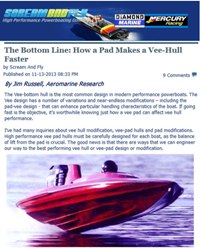 The Vee-bottom hull is the most common design in modern performance powerboats. The Vee design has a number of variations and near-endless modifications – including the pad-vee design - that can enhance particular handling characteristics of the boat. If going fast is the objective, it’s worthwhile knowing just how a vee pad can affect vee hull performance.
The Vee-bottom hull is the most common design in modern performance powerboats. The Vee design has a number of variations and near-endless modifications – including the pad-vee design - that can enhance particular handling characteristics of the boat. If going fast is the objective, it’s worthwhile knowing just how a vee pad can affect vee hull performance.
I’ve had many inquiries about vee hull modification, vee-pad hulls and pad modifications. High performance vee pad hulls must be carefully designed for each boat, as the balance of lift from the pad is crucial. The good news is that there are ways that we can engineer our way to the best performing vee hull or vee-pad design or modification.
Vee hulls have different variations of “vee” or “deadrise”. Deadrise is the measurement of the angle between the bottom of a boat (keel) and its widest beam of planing surface. A hull with a zero degree deadrise has a flat bottom; a deep Vee hull might have a deadrise of more than 20 degrees.
The deadrise angle of a Vee hull’s lifting surfaces can have a big influence on the performance of the boat. Like all aspects of powerboat performance, the design decisions are usually a compromise.
...continued.....See complete article at: aeromarineresearch.com
... and at screamandfly.com
******************* TBPNews ******************* [return to top]
3) Mercury Racing - The Glorious Story of Little Red
[from Mercury Racing Blog by Rick Mackie]
 2014 is Mercury Marine’s 75th Anniversary. The year will be filled with a variety of exciting events to celebrate our company’s rich history. Mike Butler’s restoration of “Little Red,” a historic Mercury Twistercraft tunnel race boat, is the first in a series of stories I’ll be posting throughout the year in celebration of Mercury’s rich performance heritage.
2014 is Mercury Marine’s 75th Anniversary. The year will be filled with a variety of exciting events to celebrate our company’s rich history. Mike Butler’s restoration of “Little Red,” a historic Mercury Twistercraft tunnel race boat, is the first in a series of stories I’ll be posting throughout the year in celebration of Mercury’s rich performance heritage.
You will not find a greater authority on Mercury’s outboard racing history than Mike. In fact, Mike is a former outboard tunnel boat racer himself. It was 39 years ago when he brought his Twister race outboard to Mercury Hi-Performance to repair damage resulting from a racing accident over the weekend. It was on this visit that Mike saw Little Red. He had asked the late Mike Goerlitz, Mercury Hi-Perf Sales Manager at the time, if he could buy it. Mr. Goerlitz turned him down. It was not for sale. Mr. Goerlitz did offer Mike a position with Hi-Perf from which he quickly accepted.
Mike is also an active pilot and long-time member of the Experimental Aircraft Association. He has restored a number of historic bi-planes and his Piper Cub that he flies year round. His passion for Mercury and craftsmanship skills would meld to bring back the glory of a rare gem in the history of outboard powerboat racing.
Many of you have read my series of posts on Team Mercury drivers Bill Seebold, Reggie Fountain and Earl Bentz. Although each shared their greatest memories, little discussion has been brought forth regarding the boats they drove. The tunnel hull design originated from Italy. Molinari is synonymous with some of the first tunnel race boats. Renato Molinari was one of the original Team Mercury drivers. The team used his boats almost exclusively in the first half of the ’70s. Almost is a key word as, although the team had access to the best boats, they were continually driven to stay ahead of the competition (Outboard Marine Corporation). “Racing was a test bed for everything back then,” said Mike.
“Carl Stippich was a boat builder who lived in Milwaukee. The late Jim Merten Senior (also a team driver and Mercury employee at the time, had ideas of his own when it came to tunnel boats. He and Carl decided to design their own boats. Carl and Oshkosh native Jack Ferris would build them,” Mike said. They were named Twistercrafts in honor of the various generations of Mercury Twister race outboards that would power them. They were smaller, 16/17-foot boats of non-pickle fork or full tunnel design. A total of five Twistercrafts were built.
 Hull number one was built in 1971. Jim Merten was the first to race Mercury’s new 17′ hull. Jim first raced it on Lake Tahoe in October of that year. He would also compete with it the following month at the annual Lake Havasu marathon. This boat went to Dave Packer shortly after Havasu.
Hull number one was built in 1971. Jim Merten was the first to race Mercury’s new 17′ hull. Jim first raced it on Lake Tahoe in October of that year. He would also compete with it the following month at the annual Lake Havasu marathon. This boat went to Dave Packer shortly after Havasu.
Brothers Denis and Dewey Berghauer also competed there, splitting time behind the wheel of a second 17′ Twistercraft, #138. This boat would have a limited run. Bill Petty blew it over while competing in Morgan City, Louisiana. The boat was returned to Mercury Hi-Performance for repairs. It was later destroyed in an auto accident while in tow.
Hull number three was named “Little Red” for its fire engine red paint scheme. Little Red and it’s sibling Little Blue would both earn their place in the record books. Bill Seebold Jr. averaged 85.633 mph in Little Red to set a new S class speed record at the 1972 American Power Boat Association (APBA) Outboard National Championships in Miami. Built in late 1972, Dewey Berghauer would pilot Little Blue (hull number four) to a new outboard U class kilo speed record at Kaukauna, Wisconsin in 1973.
Bill Seebold would continue to race Little Red with a variety of Mercury Outboard power. He used an in-line six cylinder C6 race outboard for the ’72 season and a TII in 1973. Little Red was one of the first boats powered by the prototype Mercury V-6 outboard (T-3 or Twister 3). Bill was able to handle the jump in power on the small 16-foot hull and raced the T-3 through the 74 season. He switched to the T-IIX for the ’75 season.
Hull number five, built in 1974, was deemed the Rhino Nose for its unique nose design. Reggie Fountain raced this boat with T-3 power. Mercury would eventually sell Little Red to Dave Packer in 1976. He raced it a couple of years before retiring it. It was stored with a number of classic boats and engines Dave had collected over the years. Dave retired from racing in the mid 1980s and passed away a few years later. Mike received a photo of Little Red sometime during the 1990s.
Mercury has been preparing for the 75th anniversary for some time now. A temporary museum highlighting each decade of Mercury’s rich history is planned. Mike could not imagine Little Red and Mercury’s undisputed racing heritage not being a part of it. He was given the authority to purchase Little Red from the Packer estate.
“It was in a lot rougher shape then originally thought,” said Mike. If it were to be restored to race-ready condition, the complete bottom would need to be replaced. Probably the decks too,” Mike said. “Knowing it is destined for a museum, I tried to maintain what I could and change only what was absolutely necessary,” said Mike.
“I am quite pleased with how it turned out,” Mike said. “I selected the T-IIX as the display engine as our exhibits department had one and the transom was cut for it. The fact that Bill last raced with that power is pretty cool too,” Mike concluded. Thanks Mike for taking the time to restore this special piece of Mercury’s performance heritage. I look forward to sharing more stories of Mercury’s rich performance heritage as the year unfolds.
For more go to: mercuryracing.com
******************* TBPNews ******************* [return to top]
4) Great Powerboat Videos
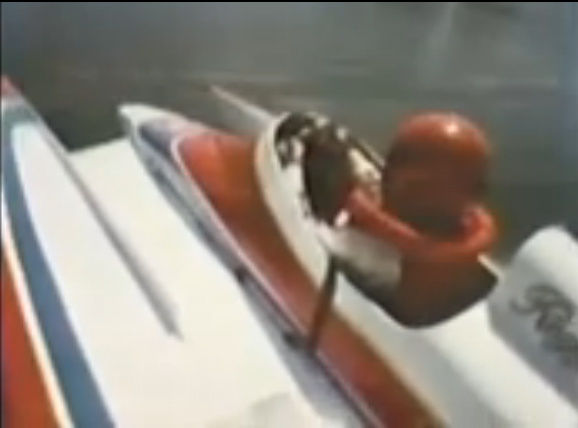 Check
out these great videos....
Check
out these great videos....
........Surfacing Propeller Honda 100mph video
........Surfacing Propeller Yamaha video
........24 Heures
Motonautiques Rouen 2013
******************* TBPNews ******************* [return to top]
5) FEATURE: "How Deadrise Affects Vee-Hull Performance" (Part 2)"
...by Jim Russell
There are dozens of design and setup factors that influence the performance of powerboat hulls, and most of these features also influence each other. This makes prediction of performance a tricky business. The good news is that most of these factors can be calculated at the design stage, and thus we can design a boat for the intended performance. One key factor of major influence on the performance of a Vee hull is Deadrise.
In last month's TBPNews (#161) we outlined how different deadrise hull designs can affect vee hull performance. As promised, this month we get more technical, and show how the Lift generated by a planing vee bottom is dependent on many factors - angle of attack, width/length ratio (called Aspect Ratio), velocity, deadrise, and hull aerodynamics too.
 Engineering the Deadrise Angle - Lower deadrise planing surfaces are more hydrodynamically efficient than deep deadrise angles. But it's not necessarily a simple issue to consider. The Lift generated by a planing vee bottom is dependent on many factors - angle of attack, width/length ratio (called Aspect Ratio), velocity, deadrise, and hull aerodynamics too.
Engineering the Deadrise Angle - Lower deadrise planing surfaces are more hydrodynamically efficient than deep deadrise angles. But it's not necessarily a simple issue to consider. The Lift generated by a planing vee bottom is dependent on many factors - angle of attack, width/length ratio (called Aspect Ratio), velocity, deadrise, and hull aerodynamics too.
Let’s look at a real example. For a typical angle of attack (trim) for a boat at a particular velocity, hydrodynamic Lift is more efficient (better) with a shallow deadrise (say 11 degrees) bottom than for a Vee surface of deeper deadrise (for example, 21 degrees). This is because a Vee hull configuration generates less efficient lift when it has higher deadrise. The drag, however, is also less with the higher deadrise angle, which is a good thing. BUT – the lift reduction (with more deadrise) is more dramatic than is the corresponding drag reduction (the lift reduces more than the drag does). So the overall effect is less lifting efficiency with Vee surfaces of higher deadrise angles.
The measure of this overall "efficiency" is called Lift/Drag ratio. The higher the L/D ratio, the more efficient is the hull design. More L/D means less power required and better fuel efficiency.
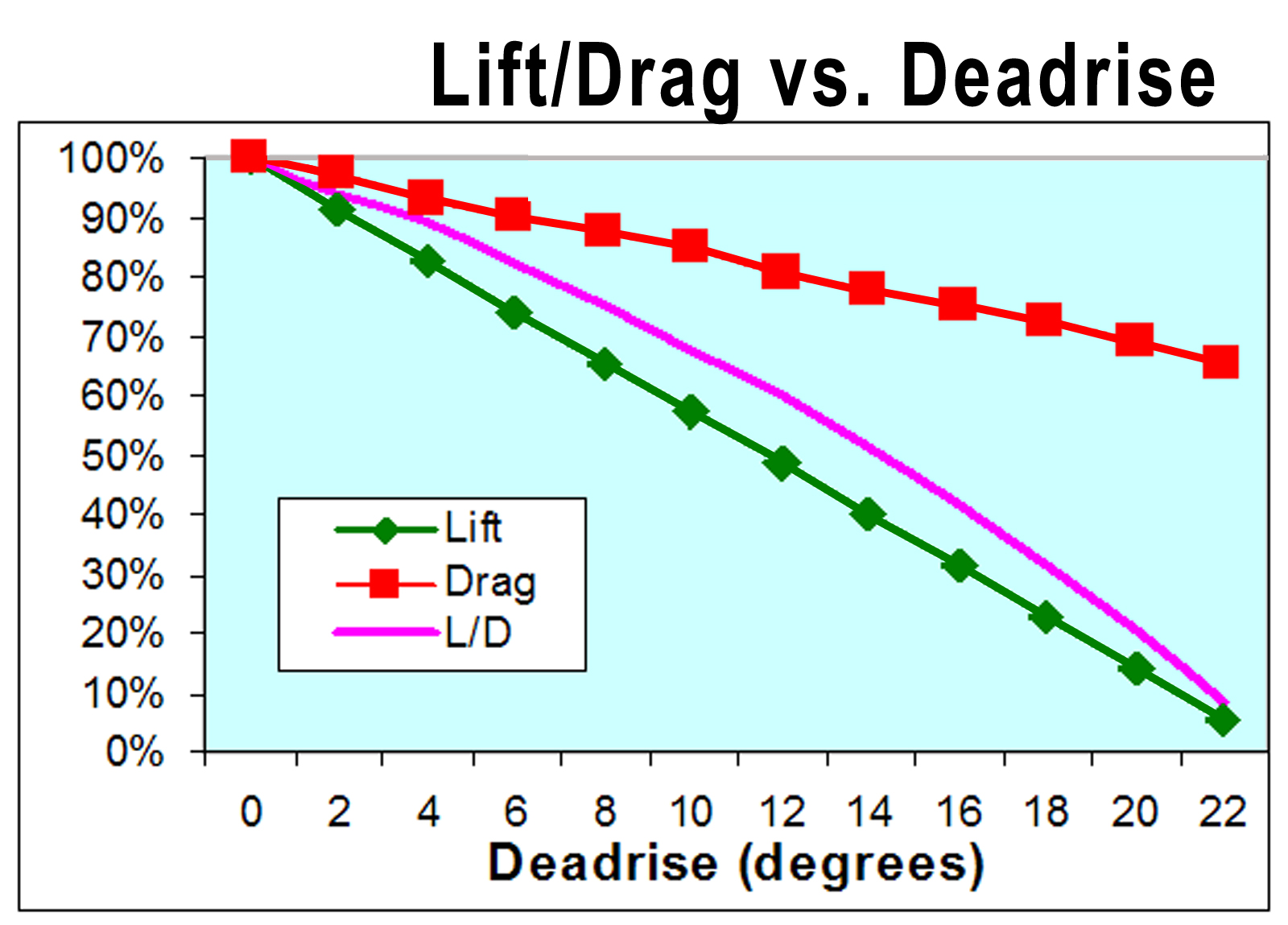 As an example, the L/D for the 11 degree deadrise Vee surface is 8 times better than the same sized Vee surface with a 21 degree deadrise. The drag of the low deadrise surface is slightly more (+30%) than the deep deadrise example, but the lift is over +1000% more for the 11 degree deadrise than the lift of the 21 degree Vee surface. This means the low deadrise Vee example has some more drag (bad), but it has MUCH more Lift (good) - and so overall, operates with
higher efficiency (8 times) than the deep deadrise Vee example.
As an example, the L/D for the 11 degree deadrise Vee surface is 8 times better than the same sized Vee surface with a 21 degree deadrise. The drag of the low deadrise surface is slightly more (+30%) than the deep deadrise example, but the lift is over +1000% more for the 11 degree deadrise than the lift of the 21 degree Vee surface. This means the low deadrise Vee example has some more drag (bad), but it has MUCH more Lift (good) - and so overall, operates with
higher efficiency (8 times) than the deep deadrise Vee example.
Of course, there are other factors that need to be considered that affect the performance of the hull, and these factors are different at every velocity. The advantages of the deep Vee can allow it to maintain a higher velocity in heavier waves. In calm waters, the very low deadrise Vee can be very efficient, reducing wetted surface (and hydrodynamic drag) to achieve high top speeds. And then, a Vee with a Pad, in the right operating conditions, can mix the efficiency of a low deadrise surface with the wave breaking advantages of the deep Vee. It is always a compromise
All boat design is a compromise. A higher deadrise can offer a better water entry, a softer ride, and better tracking. And a higher deadrise is less susceptible to Porpoising. A shallow deadrise generates the most efficient lift, are great for shallow water running and get on plane quickly, but can be unpleasant for choppy water. Also, remember that angle of attack (trim), operating velocity and aerodynamic effects can also change the whole picture. So the decision isn't always obvious. But it is certainly worth bearing in mind when you're considering the best hull design for your operating purposes.
/Jimboat
[Ed. Note: Do you have any of your own questions on performance hull design? Send your question or story to Jimboat@aeromarineresearch.com ]
See more Performance Articles at: aeromarineresearch.com/articles.html **
Read more about Vee Hull & Tunnel Boat design and setup in the world acclaimed "Secrets of Tunnel Boat Design" book
******************* TBPNews ******************* [return to top]
6) NEW! Tunnel Boat Design Program software, Version 7.15 RELEASED! - Jan 01, 2013
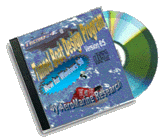 NEW Release of Tunnel Boat Design Program software. NEW Release includes Vee Boat Design Program (VBDP) in the same package, with all the other great feature upgrades!
NEW Release of Tunnel Boat Design Program software. NEW Release includes Vee Boat Design Program (VBDP) in the same package, with all the other great feature upgrades!
Check out the new TBDP performance software V7.15 at: aeromarineresearch.com/tbdp6.html
And... check out the new VBDP performance software V7.15 at: aeromarineresearch.com/vbdp.html
The Tunnel Boat Design Program (TBDP/VBDP) software makes performance analysis and design, fast and simple for all types of tunnel hulls, power catamarans, modified tunnels, vee hulls and vee-pad hulls.
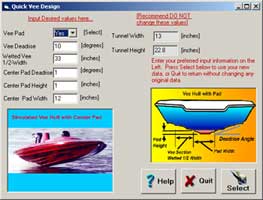 The NEW TBDP and VBDP incorporates the same ("AR Analysis") design approach as documented in the Secrets of Tunnel Boat Design book. The super power of the software allows for even more comprehensive analysis, employing engineering techniques that include detailed aerodynamic, hydrodynamic and stability calculation methods that are key to proper Tunnel hull design and accurate performance prediction. TBDP/VBDP is a high performance software, but it's not just for high performance applications. Great for recreational, commercial, fishing, high performance and racing tunnels, powercats and vee hulls (even whitewater jet hulls, RC boats, Fishing/Utility tunnels, modified tunnel (Mod-VP), modified Vee hulls, bass boats) - and NOW for Vee hulls & Vee-Pad hull designs!
The NEW TBDP and VBDP incorporates the same ("AR Analysis") design approach as documented in the Secrets of Tunnel Boat Design book. The super power of the software allows for even more comprehensive analysis, employing engineering techniques that include detailed aerodynamic, hydrodynamic and stability calculation methods that are key to proper Tunnel hull design and accurate performance prediction. TBDP/VBDP is a high performance software, but it's not just for high performance applications. Great for recreational, commercial, fishing, high performance and racing tunnels, powercats and vee hulls (even whitewater jet hulls, RC boats, Fishing/Utility tunnels, modified tunnel (Mod-VP), modified Vee hulls, bass boats) - and NOW for Vee hulls & Vee-Pad hull designs!
NEW Version 7.15 NOW RELEASED!
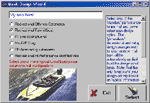 Accurate Performance Prediction through full velocity range; Dynamic Stability Analysis; Hull design optimization.
Accurate Performance Prediction through full velocity range; Dynamic Stability Analysis; Hull design optimization.
BIG NEW FEATURES...YOU ASKED FOR IT...NOW WE'VE GOT IT!
This is the ONLY software specifically for design, performance analysis and setup of tunnel hulls and performance Vee hulls!
*** New Performance Summary Wizard with key indicators and recommendations! Optimization of hull design features. New aerodynamic algorithms. NEW USER picture import feature. New CG import feature. Dozens of NEW features - including VEE HULL DESIGN software INCLUDED.
*** Vee Hull Design Feature - full Vee Hull & Vee-Pad Hull design & performance analysis.
*** Porpoise Analysis - NEW TBDP V7 BREAKTHROUGH FEATURE! - New analysis tool! XPorpoise is an engineering tool developed by AR that predicts your hull's inherent susceptibility to instabilities that lead to porpoising.
see more on the TBDP/VBDP features here.
******************* TBPNews ******************* [return to top]
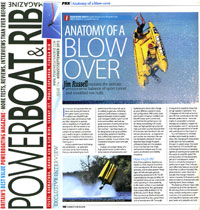 NEW - Author Jim Russell outlines secrets of
'Anatomy of a BlowOver!'
NEW - Author Jim Russell outlines secrets of
'Anatomy of a BlowOver!'
Jimboat reviews 'Step On It! - The In's and Out's of Foot Throttles'
Jimboat reviews 'Outboard Jack Plates for Performance in Powerboats'
Jimboat outlines secrets of 'Step Design in Powerboats'
Jimboat outlines secrets for 'Successful Propeller Testing for Performance'
Jimboat details the speed secrets of 'Vee pad design', vee hull design and performance powerboat design
Jimboat explains 'Gearcase & Propeller BlowOut' (RIB magazine April 2011 issue)
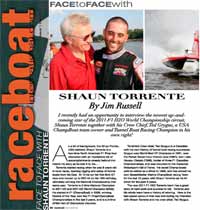 Jimboat
explains 'Chine Walking' (RIB magazine Dec 2010 issue)
Jimboat
explains 'Chine Walking' (RIB magazine Dec 2010 issue)
Jimboat explains 'How Trim Angle and engine height affects performance' (RIB magazine Jan 2011 issue)
Jimboat interviews in RaceBoat International magazine, the newest up-and-coming star of F1 H20 World Championship circuit, Shaun Torrente together with his Crew Chief Ted Gryguc.
[Jimboat writes Feature articles in PowerBoat & RIB magazine, HotBoat, Scream&Fly magazine, Family&Performance Boating,
Performance Powerboat, RIB magazine, World of Powerboats, RaceBoat International, SEA Yachting, Extreme Boats magazines].
-
Tunnel
Vision - 'How Do Tunnel Boats Fly?' - HB Nov/Dec 2008
- 'Why
Do Boats Create Rooster Tails?' -
HB-August 2008
- 'What
a Blow Out!' - "Gearcase & Propeller Blowout- Why it Happens & How to Fix it" -
HB-June 2008
-
'Walk on the
Wild Side' - "Chine Walk - Why it happens & How to Fix it" - HB-Jan
2008
- 'Hump
Zone' - "Why does your Boat Porpoise?" - HB-April 2007
-
'The Bottom Line'-"Why does a
Pad make a Vee Hull faster?" -
F&PB-Sept 2005
- "10
Smokin' Speed Secrets Revealed..." -
HB-Feb2005
-
"Winterizing your Performance Outboard" - F&PB-Jan2005
-
"What a Drag" - 'Trim Angle & Engine Height Can Reduce Drag and
Increase Speed' - HB-Sept2004
-
"10 Safety Tips" - 'Ten Safety Ideas for High Performance Go-Fast
Boats' - HB-Aug2004
- "Flight
Path" - 'Where does Lift Come From?' - HB-April2004
- "Rocket
Science" - 'How To Increase Your Hull's Design Speed With Aerodynamics' -
World of Powerboats-Winter2004
-
"Tunnel
Vision" - 'What Factors Influence Tunnel Hull Performance' - Extreme
Boats-April2003
- "Step-by-Step"
-
'Step
Design in Powerboats' - TBPNews #88, October 2005
******************* TBPNews
*******************
[return to top]
See you next time!
/Jimboat
>>>>>>>>>>>>>>>>>>>>>
Let us know ideas you have, requests for articles, questions or comments on TBPNews. Send
comments to TBPNews@aeromarineresearch.com
>>>>>>>>>>>>>>>>>>>>>>>>>>>>>>>>>>>>>>>>>>>>>>>>>
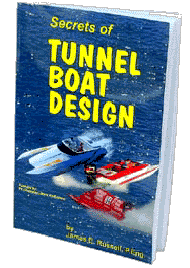 Get your full, illustrated,
13th
edition copy of the world acclaimed "Secrets
of Tunnel Boat Design" book;
Get your full, illustrated,
13th
edition copy of the world acclaimed "Secrets
of Tunnel Boat Design" book;
"History
of Tunnel Boat Design" book, "Secrets
of Propeller Design" book, the "Tunnel
Boat Design" software
for tunnel and high-performance Vee-hull design,
and "PropWorks2"
software for speed prediction and propeller
selection at the AeroMarine
Research web site: http://www.aeromarineresearch.com